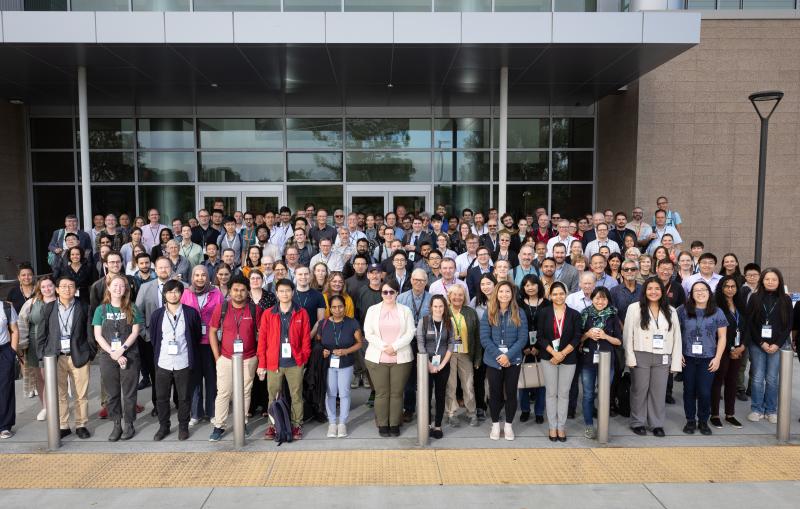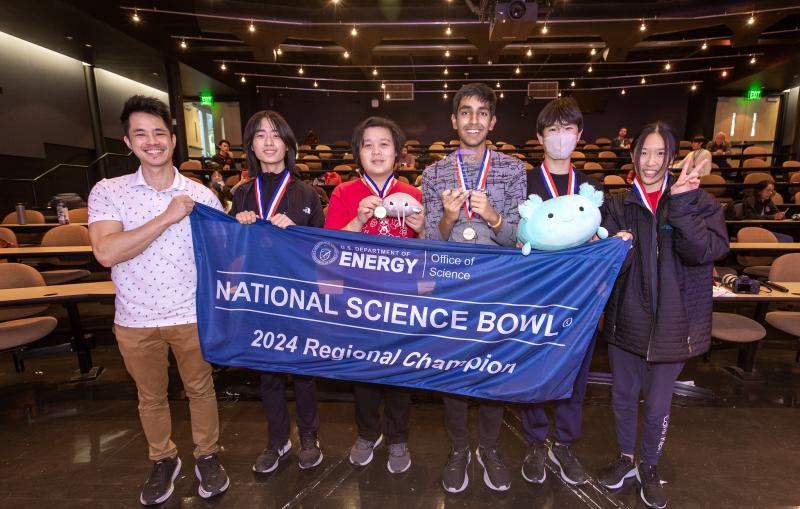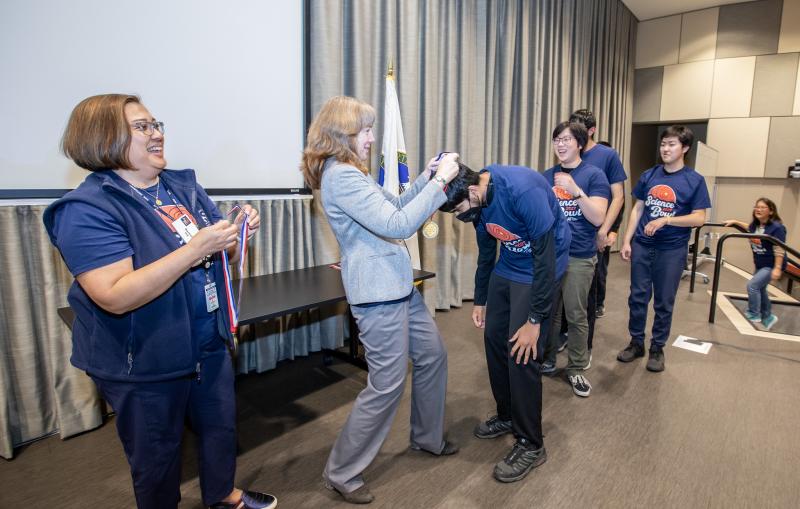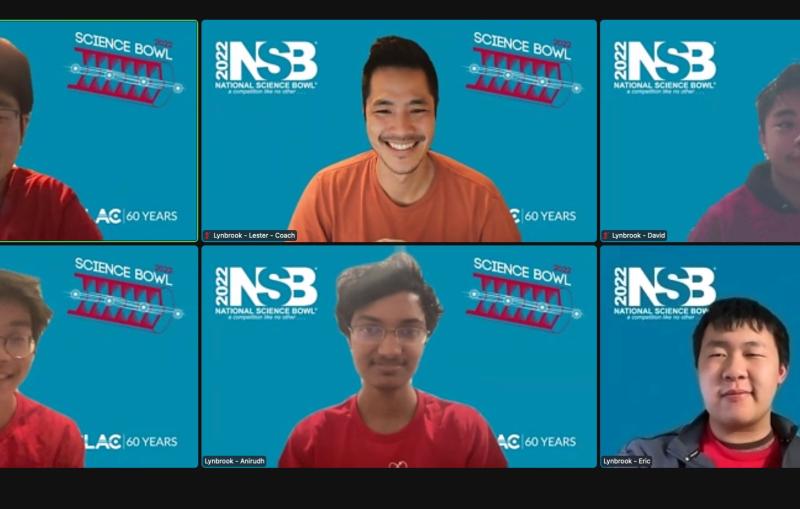SLAC celebrates 10 years of innovative science at the Linac Coherent Light Source
More than 300 gathered for a day-long symposium to celebrate the history and future of the pioneering X-ray laser.
By Aiko Takeuchi-Demirci
The Department of Energy’s SLAC National Accelerator Laboratory celebrated the 10-year anniversary of the first light at the Linac Coherent Light Source (LCLS) April 10. More than 300 participants – a mix of SLAC staff and scientists from partner laboratories and the international user community – gathered for a day-long symposium that highlighted the past, present and future trajectory of the revolutionary X-ray free-electron laser (XFEL).
A dream come true
Speakers were invited from across the country and abroad to share their experiences and research at LCLS from the initial vision and design work to first X-ray light on April 10, 2009, and the current upgrades of LCLS that will keep the U.S. at the forefront of this important technology.
“LCLS led to the transformation of the laboratory,” said Chi-Chang Kao, SLAC director, in his opening remarks, referencing SLAC’s journey from a lab known for its Nobel Prize winning work in particle physics to its current leadership role in the field of X-ray and ultrafast science.
The directors and scientists involved in the planning and building of LCLS since the 1990s recalled the scale of the challenge. The concept was to produce X-ray pulses that would be a billion times brighter than anything that came before.
“There was an extreme stretch from where we were to where we had to go,” said Arthur Bienenstock, professor emeritus of photon science and vice provost and dean of research at Stanford University from 2003 to 2006.
Claudio Pellegrini, distinguished professor emeritus of physics at UCLA and adjunct professor of photon science at SLAC, first proposed LCLS in 1992 and is referred to as a “godfather” of the XFEL field. He presented a deep history of the many stages and people involved in the development of the concept, including its origins at Stanford University and involving people from across the community, reflecting: “It takes a village to raise a child.”
The DOE drove the assessment of the scientific and technical merit of these ideas, informed by two important Federal Advisory Committee reports and by the seminal report, “LCLS – The First Experiments” (2000), led by former LCLS Director Joachim Stöhr and Gopal Shenoy of the DOE's Argonne National Laboratory.
Pat Dehmer, retired deputy director of the DOE Office of Science, presented the DOE perspective throughout the process of preparing and developing the LCLS project. What started as a demonstration project for X-rays turned into a significant investment for the construction and operation of LCLS and its instruments, she said.
“This is just what one dreams about,” said John Galayda, LCLS project director, who delivered the laser on day one of commissioning, chalking up the success to a confluence of “incredible people and a significant amount of good luck.”
Users of LCLS shared research results that showcased the many ways that LCLS has transformed scientific fields, ranging from quantum material science to the catalysis of chemical reactions and new understanding of pharmaceutical drug targets. Linda Young, distinguished fellow at Argonne, was among the very first users of LCLS on Oct. 1, 2009. Since then, she has conducted numerous LCLS experiments, including one of the last before LCLS started construction work for the LCLS-II upgrade in November 2018.
“What motivated us to come for the first was the incredible intensity of LCLS; what motivated us to come [most recently] were the new attosecond pulses of the laser,” she said, referring to the duration of the X-ray pulses that are used to capture snapshot images of atoms and molecules at work. Over this first decade of LCLS operations, the accelerator science team has driven remarkable advances in performance, including shortening the pulse duration from 100 femtoseconds to one-fifth of a femtosecond, as described by Zhirong Huang, SLAC professor of photon science.
Mike Dunne, current LCLS director, presented the future opportunities with the planning and building of LCLS-II, a superconducting X-ray laser that will run alongside LCLS. With X-ray beams 10,000 times brighter and pulses that arrive up to a million times per second, LCLS-II will “transform our understanding of dynamics in real-world materials and chemical systems,” he said.
‘The heart of the machine’
Throughout the day, presenters echoed the importance of collaboration between scientists, engineers, technicians, administrators and support staff from several DOE national laboratories and universities to the success of LCLS, with particularly notable contributions from Argonne National Laboratory for the undulators that produce the X-ray pulses and can be thought of as ‘the heart of the machine’; Los Alamos National Laboratory; Lawrence Livermore National Laboratory; Lawrence Berkeley National Laboratory; and UCLA.
The collaboration extends beyond national borders to the international science community.
Jochen Schneider, retired photon science research director from DESY laboratory in Germany, and director of the experimental facilities division for LCLS in 2008-2009, reflected on the relationship with DESY that enabled many of the first experiments to be so successful. The theme of his presentation was “SLAC+DESY: Great collaboration in a competitive world since 1960,” underscoring the long road the two labs have traveled together.
Christoph Quitmann of Lund University shared how XFEL facilities in Germany, Italy, Switzerland, Korea and Japan perceive LCLS. “LCLS has pioneered ultrafast science using uncommon boldness and perseverance,” stated FERMI (Italy). SACLA (Japan) commented that their team “admires your strong leadership, excellent foresight, and great success.”
In addition to the partnership between DOE and LCLS, Chris Fall, senior advisor to the DOE Undersecretary of Energy, stressed the importance of connecting the American public with the research and achievements at LCLS. He encouraged the audience to consider “how we can share that wonder, that excitement, and those accomplishments with the very generous public, who also wants to be proud of what they are making possible for this country and the world.”
In closing remarks, Persis Drell, Stanford University provost and former SLAC director, highlighted the strong relationship between Stanford University and SLAC, and her own memory of the historic moment, 10 years ago, when she received the news of the laser’s success. She was home asleep when the phone call came. “As I struggled to open my eyes, I heard at the other end of the line, ‘We have a laser!’” she said. “The turn-on went better than anyone could have dreamed, and the science started to flow.”
At the time, Drell thought that in 10 years people would look back on LCLS as just another successful project. “But today the efforts still seem heroic to me…LCLS has opened a new frontier of science,” she said. “SLAC has reinvented itself once again, and we are all excited about the future.”
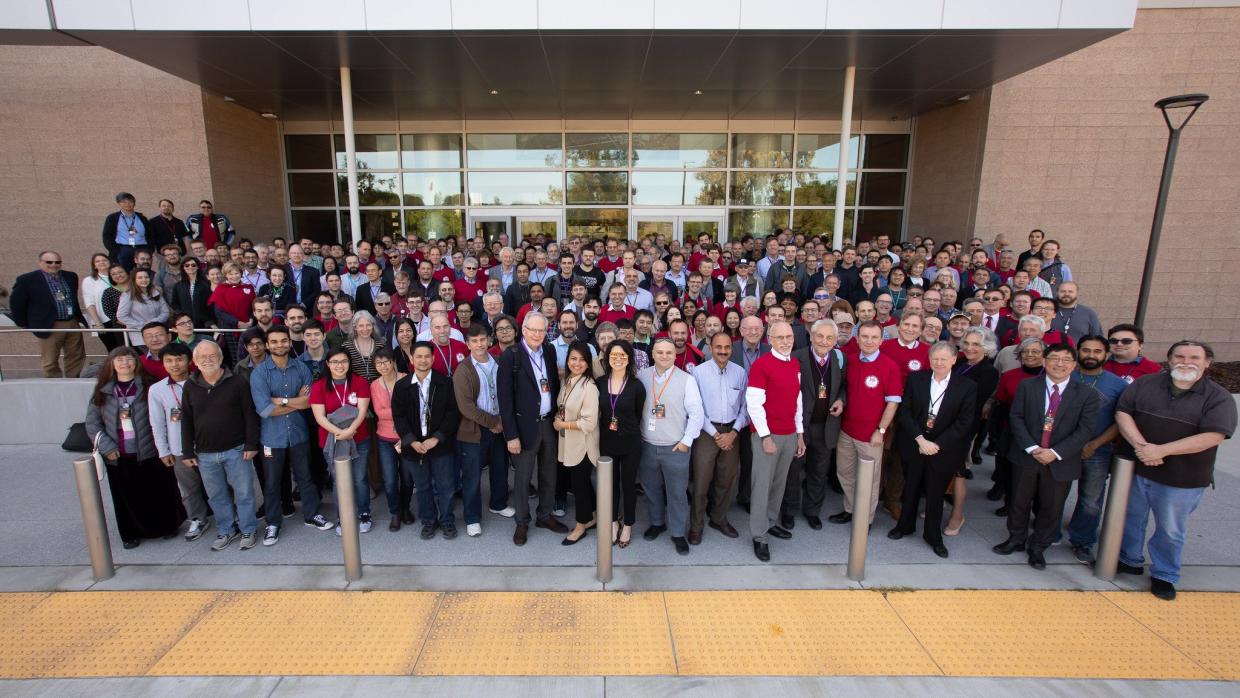
Participants gathered in front of the main SLAC building for a group photo, some wearing the red LCLS commemorative T-shirt. An LCLS undulator was exhibited for people to sign before it is placed on permanent display at SLAC.
To view slides from the presentations, please visit the symposium website.
About SLAC
SLAC National Accelerator Laboratory explores how the universe works at the biggest, smallest and fastest scales and invents powerful tools used by researchers around the globe. As world leaders in ultrafast science and bold explorers of the physics of the universe, we forge new ground in understanding our origins and building a healthier and more sustainable future. Our discovery and innovation help develop new materials and chemical processes and open unprecedented views of the cosmos and life’s most delicate machinery. Building on more than 60 years of visionary research, we help shape the future by advancing areas such as quantum technology, scientific computing and the development of next-generation accelerators.
SLAC is operated by Stanford University for the U.S. Department of Energy’s Office of Science. The Office of Science is the single largest supporter of basic research in the physical sciences in the United States and is working to address some of the most pressing challenges of our time.



